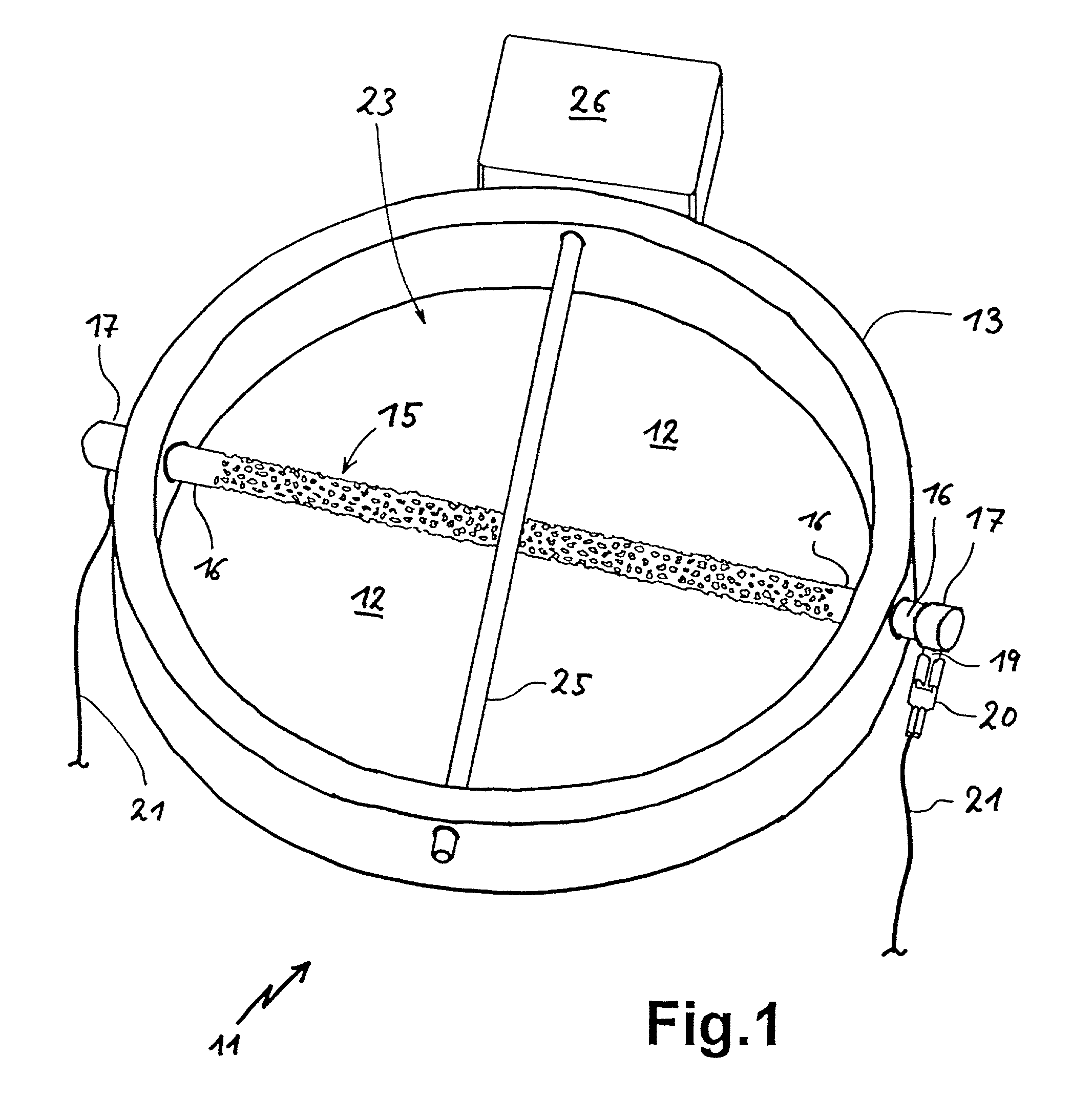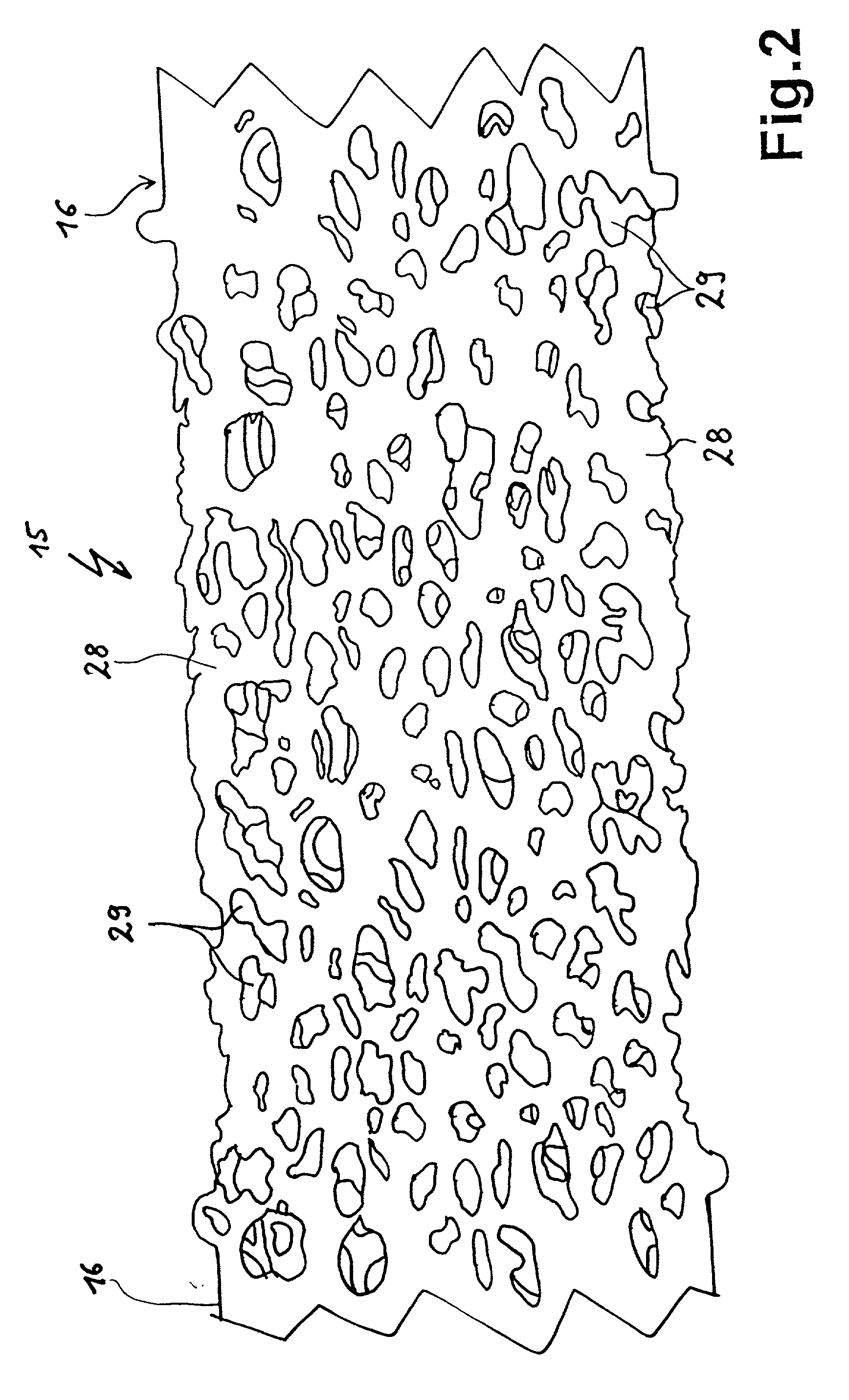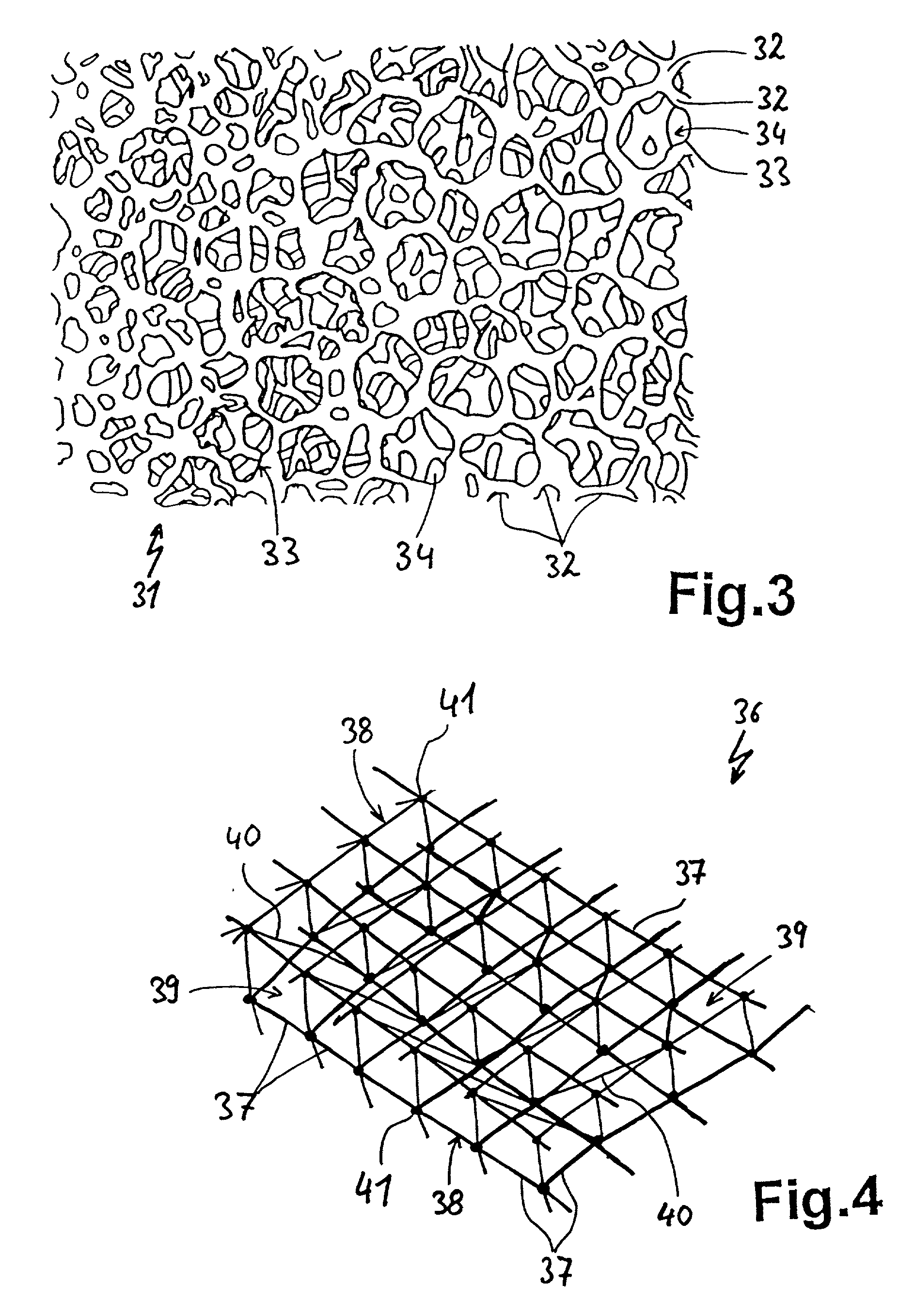Electric heating element and method for its production
a technology of heating element and heating element, which is applied in the direction of heating arrangement of hot plates, combustion types, lighting and heating apparatus, etc., can solve the problems of heating element ruggedness and volume,
- Summary
- Abstract
- Description
- Claims
- Application Information
AI Technical Summary
Benefits of technology
Problems solved by technology
Method used
Image
Examples
Embodiment Construction
[0060] Referring now to FIG. 1 there is illustrated diagrammatically in a slanting view a radiant heater body 11 consisting of a dished insulator substrate 12 and a tubular insulating rim 13. Substrate 12 and rim 13 may be arranged, where necessary, in a supporting dish or the like, for example of thin sheetmetal.
[0061] Applied to the insulator substrate 12 is a heating element 15 in accordance with the invention forming the diameter of the round radiant heater body 11. The heating element 15 is illustrated rod-shaped, whereby of course, deviations from this shape may be provided. In addition, the heating element 15 is illustrated in this arrangement alone solely for a better overview, i.e. it being possible to advantage to provide further heating means. Further heating means could be, for example, further heating rods such as the heating element 15, or as an alternative thereto other radiant heater bodies such as radiant heater bands or bright radiators, e.g. halogen lamps. In such...
PUM
| Property | Measurement | Unit |
|---|---|---|
| temperature coefficient | aaaaa | aaaaa |
| temperature coefficient | aaaaa | aaaaa |
| temperature coefficient | aaaaa | aaaaa |
Abstract
Description
Claims
Application Information
 Login to View More
Login to View More - R&D
- Intellectual Property
- Life Sciences
- Materials
- Tech Scout
- Unparalleled Data Quality
- Higher Quality Content
- 60% Fewer Hallucinations
Browse by: Latest US Patents, China's latest patents, Technical Efficacy Thesaurus, Application Domain, Technology Topic, Popular Technical Reports.
© 2025 PatSnap. All rights reserved.Legal|Privacy policy|Modern Slavery Act Transparency Statement|Sitemap|About US| Contact US: help@patsnap.com



